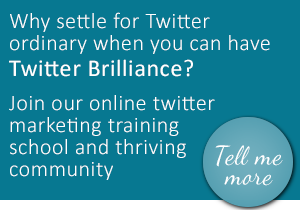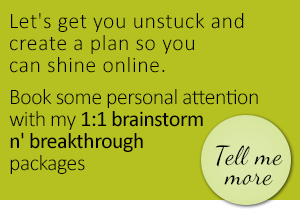Blog
Solid Productivity Tips Category
Are you a professional procrastinator?
Monday morning arrives, computer purring, coffee too hot to drink perched seductively on its coaster and my neatly written task list is waiting for action. It’s as long as a page with the most important tasks highlighted in yellow. I’m ready to face the day. But hang on…this was the same list I sat down to last Friday…
Ok I admit it, I’m a procrastinator. But then, who isn’t? It happens to all of us sometimes and when those time-wasting habits creep into my day, I call on the follow tips to get me back on track.
- If you’re intimidated by a big task and it keeps slipping down your task list despite its increasing urgency, break it up into smaller pieces. By tackling these one at a time you will find it easier to motivate yourself and gain a sense of achievement far quicker. Before you know it, the project will be completed.
- You could start the day with the task you procrastinate most on, the argument being that once it’s completed the rest of the day will be easy-peasy. But if you’re anything like me and work better under pressure, this may not work for you. Firstly, knowing I have to deal with an undesirable task as soon as I set down to work does not make for a good mood and before I know it, all I’ve achieved is flicking through a third-rate weekly gossip mag. Secondly, by achieving a number of points from my to do list before tackling the biggie gives me a huge dollop of motivation, especially if I allow myself a treat once I’ve completed it.
Still procrastinating? You could try one of the following. You’ll need an easy to use timer (like a kitchen timer or this)
- Try committing yourself to spending just 15 minutes on the task at hand. Set your timer and get cracking. Don’t be distracted by other things going on. This is about focussing on your chosen task and nothing else for just 15 minutes! Doesn’t sound like alot (which is a good thing) but when the timer beeps you’ll be surprised how much you’ve got done and it may inspire you to continue working on the task for a bit longer.
- If that doesn’t work the (10+2)*5 method as suggested on 43Folders is for professional procrastinators with the worst kind of trouble. In summary, work on a single project for exactly 10 minutes followed by a 2 minute break and repeat this method systematically through your task list another 4 times. By the time you’re done, you’ll have achieved an hour of dedicated work and hopefully be on the way to breaking your procrastination habit.
I hope these help you as much as they help me. I don’t know about you, but it’s time for a coffee…
Get Organised: Tips for a clutter free existence, pt3
Remember the boy scout’s motto: ‘Be Prepared’
Preparing for your day is the ultimate organisation skill. If you know what you need to focus on and are mentally ready to achieve the challenges ahead, you will optimise your performance and work more efficiently.
Clear your work area
‘Tidy room, tidy mind’ my mum always said, and she was right. You will feel overwhelmed and distracted if you are staring at a pile of unruly papers, and without them you are more likely to devote a concentrated effort on whichever task is at hand. Get rid of them using the ‘touch a piece of paper once’ rule.
If you have other non-essential items on your desk put them away in a drawer and use a desk tidy for everyday items such as pens. Allow as much work space as possible to achieve a physical and psychological advantage.
Dealing with delays
Always build a 20% window into your day for last minute projects or unforeseen delays. A day never goes by without something cropping up – Google on a go-slow, a client calls with a last-minute issue, or you find a particularly enthralling blog article on Twitter that saps your time. These events can not be avoided (yes, even Twitter! See next article on procrastination), but if you allow for them, you won’t feel cheated out of your precious time.
Know what’s coming
We spend 80% of our time trying to complete 20% of tasks so set aside 10 minutes a day to prioritise and update your task list. I like to do this at the end of each day so I’m prepared for what lies ahead. It helps me focus on the essential matters and stops the sense of being overwhelmed. By being prepared I can relax knowing that everything is in hand. Having a head brimming with a jumble of jobs does not help stress levels or sleep patterns.
If you have meetings planned for the next day, ensure you have all the relevant paperwork organised beforehand and you know where you are going so it’s not a frantic last minute rush.
This is also a good time to review your inbox and deal with any unnecessary emails. Delete anything you don’t need, file all those emails related to the tasks you have completed that day, and highlight those that need immediate action tomorrow. And lastly, leave your desk looking neat and tidy – ready to start afresh the next day.
Get Organised: Tips for a clutter free existence, pt2
Many fine things can be done in a day if we don’t make that day tomorrow.
Last week, we looked at how to transform your paperwork from a mountain to a molehill. This week, we tackle the task list.
Despite all the technology available at my finger tips, there is one thing I will always use that is not electronic. My task list. I have tried the other way, but it’s never worked for me – I like the flexibility of being able to write and find my list quickly, add to it or highlight important tasks. Whatever time of day and whenever I need it, it’s there – no need to fire up the computer or multi-task with my blackberry. Call me old fashioned but for me it’s far simpler using a book. What’s more, my task lists are contained in a hardback A5 page-a-day diary. I always use a hardback otherwise come April, it’s a dog-eared relic. This is a great way of staying organised for 3 reasons:
- You know exactly what has to be achieved on any given day
- You can refer back to see what you did and when (great when sorting expense claims)
- You can easily carry forward a follow-up reminder by adding the task to your list on another date
If you are comfortable using electronic lists, that’s great, but don’t feel pressured to use technology just because it’s there. If you’ve been using tired old notepads and have accumulated a number of them that you use simultaneously, try the diary technique. And don’t forget to use a bookmark so you can find your list each day quickly and easily.




